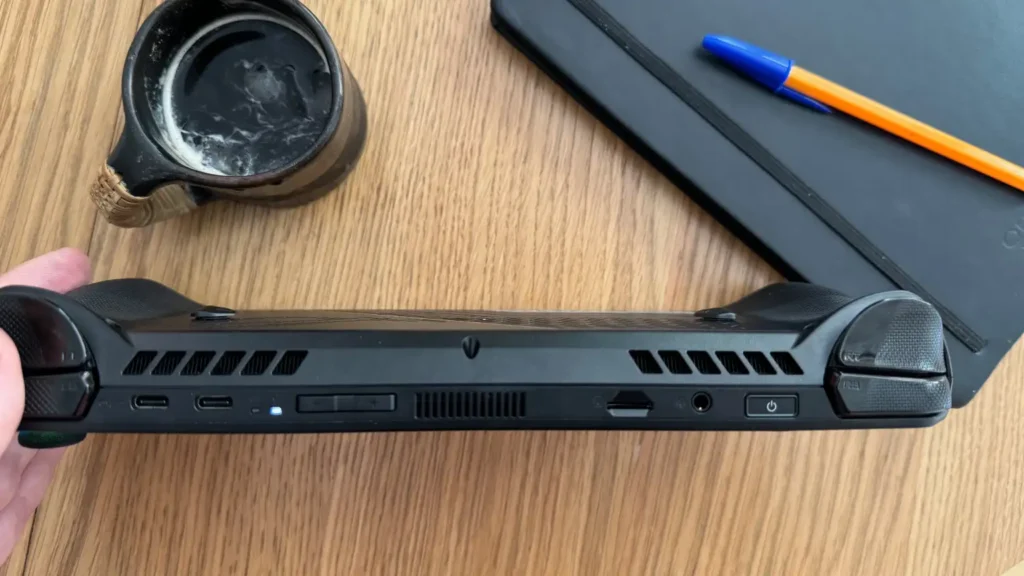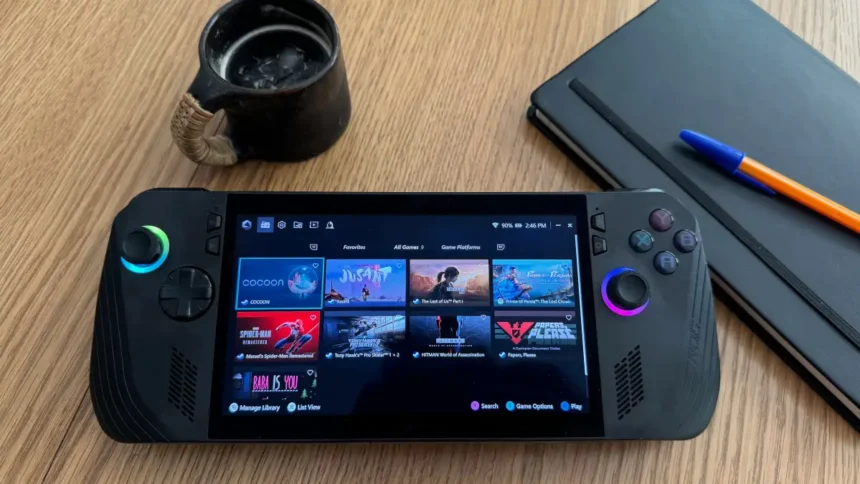Just over a year after the launch of the ROG Ally, Asus is back with a refined version of its portable device, the ROG Ally X. This Windows-based machine starts shipping on July 22 for $800. I’ve spent a few days with this portable console, and there’s already plenty to admire, especially regarding the hardware.
Mainstreaming Handheld PC Gaming
Released in 2022, Valve’s Steam Deck played a significant role in popularizing handheld PC gaming. While not the first to explore this form factor, Valve hit a sweet spot with the right mix of specs, portability, and price.

As the Steam Deck became an instant hit, other PC manufacturers took notice. Lenovo introduced the Legion Go, and Asus developed the ROG Ally. There are also niche manufacturers like Ayaneo exploring this market.
Display and Controls
The device features a vibrant seven-inch display with a 1080p resolution and a 120Hz refresh rate. Similar to a Nintendo Switch, the display is flanked by a standard array of gaming buttons and joysticks.
Unlike the Switch, the controls aren’t annoyingly small. The ROG Ally X feels like a full-size controller in your hands. The joysticks resemble those on a modern Microsoft Xbox controller. The A/B/X/Y buttons are large and clicky, and the analog triggers have plenty of travel.
However, I wasn’t entirely convinced by the D-pad, which feels a bit mushy, reminiscent of a third-party budget controller. Similarly, the View and Menu buttons are awkwardly positioned next to the display, making them hard to reach without stretching your thumbs.
There are two additional macro keys at the back of the device. Configuring them as View and Menu buttons improved usability. On each side of the screen, you’ll also find a command center button for performance tweaks and an Armoury Crate button to access Asus’ game launcher.
Software Interface
The ROG Ally X’s main software interface, Armoury Crate SE, is functional but not exceptional. It acts as a game launcher, centralizing everything you’ve installed from Steam, the Epic Games Store, Ubisoft Connect, etc. It also allows you to adjust device settings, from joystick LEDs to gamepad profiles.
While it gets the job done if you minimize time spent in it, it has its quirks. For example, a game installed using GOG Galaxy mysteriously disappeared from my list. The interface can be slow to open menus, and I experienced a couple of crashes.

The command center, indispensable for on-the-fly adjustments like switching between Silent, Performance, or Turbo mode, can also be slow to respond.
Comfort and Usability
The device is comfortable to hold — for short sessions, at least. The primary issue with these PC gaming handhelds is their weight. They also tend to get warm during gameplay.
Before testing the ROG Ally X, I spent hours with the Logitech G Cloud, an Android handheld designed specifically for cloud gaming and remote play. The G Cloud offers an extremely satisfying experience as it remains quiet (it’s a fanless device), has excellent battery life, and is easy to hold.
We are at the beginning of a significant shift in PC gaming, moving from full-fledged PC towers to nimble, capable handhelds. Over time, gaming handhelds will become smaller, lighter, and quieter, resembling Android-based handhelds more closely. For now, experiences like the G Cloud remain limited.
The ROG Ally X, however, feels like the culmination of current gaming handhelds. When Nintendo released the Game Boy 35 years ago, it felt like you could play NES games on the go. Similarly, the ROG Ally X serves as a great gaming companion for long travel days or daily commutes on the metro. Despite its weight, I had no issue immersing myself in games for several hours.
Performance and Battery Life
Regarding performance, Asus retained the AMD Z1 Extreme APU for the ROG Ally X, but increased RAM from 16GB to 24GB. This boost in memory significantly improves gaming performance as memory is shared between VRAM and system RAM.
The handheld features a user-replaceable 1TB NVMe storage card (in 2280 format). The battery capacity is twice as large (80Wh) as its predecessor, and the proprietary eGPU port has been replaced with a more standard USB Type-C with USB 4 support.
The device excels with games that don’t require a high-end PC, such as Jusant, Cocoon, or Prince of Persia: The Lost Crown. The ROG Ally X can easily render 60 to 120 frames per second for these games in 1080p without using the 30W boost mode.

For AAA games, compromises are necessary. I managed around 45 frames per second with high graphics settings in Marvel’s Spider-Man by enabling RSR, AMD’s resolution upscaling feature. For demanding titles like The Last of Us: Part I, you’ll need to use low settings and aggressive resolution scaling to achieve 30FPS.
If you’re a fan of strategy or simulation games, the ROG Ally X might not be the best fit. However, you can connect it to a monitor and use a mouse and keyboard if it’s your only PC.
Battery life varies significantly based on the games you play and the power mode selected. You can enjoy long sessions of Baba is You in “silent mode,” but using “boost mode” for The Last of Us will drain the battery quickly. I haven’t conducted thorough battery tests yet, but I’m sure many reviewers will provide benchmarks soon.
A PC in Console Form
The most surprising aspect of the ROG Ally X is that it’s a PC running Windows. You can install whatever you want and use it as a desktop environment. However, navigating Windows without a mouse and keyboard can be frustrating. While it’s fine for installing game launchers and a few games, a proper laptop or even a smartphone is more convenient for other tasks.

Being a PC, you can install all Windows games, but performance will vary. You’ll need to tweak settings to balance battery life and game quality.
The ROG Ally X has a console-like form factor, but don’t expect a polished, console-like experience. It isn’t a Nintendo Switch competitor. Instead, the ROG Ally X and similar handhelds represent an early glimpse into the future of PC gaming — a future that looks like a console but functions as a PC.










